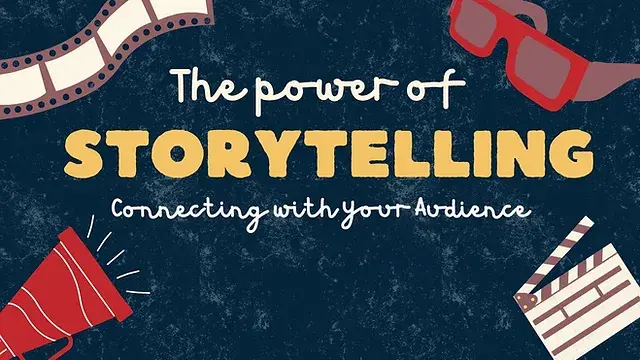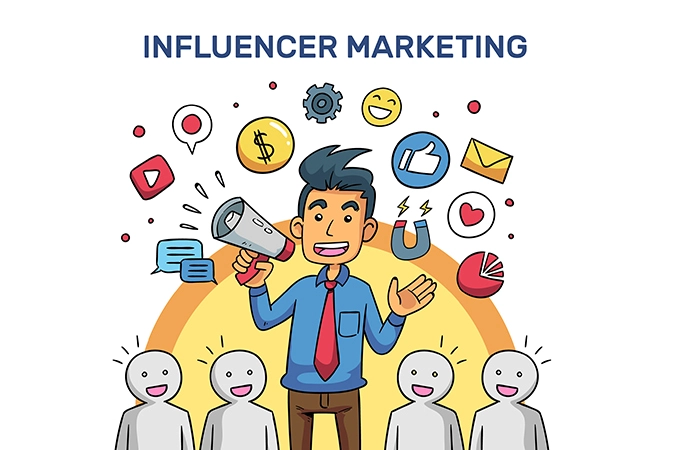In today’s dynamic and competitive marketplace, brands are constantly seeking innovative ways to engage and connect with their audience. One of the most compelling strategies that have emerged in recent years is the art of storytelling. Beyond just selling products or services, storytelling allows brands to create meaningful narratives that resonate with consumers on a deeper level. This article explores the profound impact of storytelling in branding, examining why it matters, how it works, and strategies for effectively implementing storytelling to forge strong emotional connections with audiences.
Contents
Introduction to Brand Storytelling
What is Brand Storytelling?
Brand storytelling goes beyond traditional marketing tactics. It involves crafting narratives that convey the values, mission, and personality of a brand in a way that engages and captivates the audience. Unlike conventional advertising, which focuses on product features and benefits, storytelling seeks to create an emotional bond with consumers by weaving together elements of empathy, authenticity, and relatability.
The Importance of Emotional Connection
Emotions play a crucial role in consumer decision-making. Studies have shown that emotionally engaged consumers are more likely to be loyal to a brand and advocate for it. Brand storytelling leverages this emotional connection to foster trust, loyalty, and affinity among consumers.
Why Storytelling Matters in Branding
1. Creating Authenticity
Authenticity is a cornerstone of effective branding. Through storytelling, brands can communicate their values and beliefs in a genuine and transparent manner, thereby resonating with consumers who share similar ideals.
2. Differentiation in a Crowded Market
In today’s saturated marketplace, differentiation is key to standing out from competitors. Brand storytelling offers a unique opportunity for brands to carve out a distinct identity and position themselves as more than just a provider of products or services.
3. Building Trust and Credibility
Consumers are increasingly skeptical of traditional advertising messages. By telling compelling stories, brands can build trust and credibility with their audience, demonstrating their commitment to transparency and customer-centric values.
Elements of Effective Brand Storytelling
1. Character Development
Successful brand stories often feature relatable characters that embody the brand’s values and resonate with the target audience. These characters serve as protagonists whose journey reflects the brand’s mission and vision.
2. Narrative Structure
A well-crafted narrative follows a structure that includes an introduction (setting the stage), rising action (building tension), climax (turning point), falling action (resolution), and conclusion (reflection or call to action). This structure helps maintain audience engagement and emotional investment throughout the storytelling journey.
3. Authenticity and Transparency
Authenticity is crucial in brand storytelling. Consumers are adept at detecting insincerity, so brands must ensure that their stories are genuine and aligned with their actions and values. Transparency further enhances credibility by fostering openness and honesty in communication.
Case Studies of Successful Brand Stories
1. Nike: Just Do It
Nike’s “Just Do It” campaign is a classic example of effective brand storytelling. By featuring real athletes and their personal stories of perseverance and triumph, Nike inspires consumers to push their limits and pursue their dreams. The campaign’s powerful narratives have solidified Nike’s position as a brand that champions determination and excellence.
2. Coca-Cola: Share a Coke
Coca-Cola’s “Share a Coke” campaign transformed the way consumers interact with the brand. By personalizing Coke bottles with popular names and encouraging people to share them with friends and family, Coca-Cola created a sense of belonging and connection among consumers. The campaign’s storytelling approach fostered emotional engagement and strengthened brand loyalty.
3. Airbnb: Belong Anywhere
Airbnb’s “Belong Anywhere” campaign tells stories of travelers experiencing local cultures and communities through unique accommodations. By highlighting personal experiences and emotional connections forged through travel, Airbnb portrays itself not just as a lodging platform but as a facilitator of meaningful human connections.
Implementing Brand Storytelling Strategies
1. Know Your Audience
Effective storytelling begins with a deep understanding of your target audience’s needs, desires, and values. Tailor your brand narrative to resonate with their aspirations and emotions.
2. Consistency Across Channels
Maintain consistency in storytelling across various marketing channels, including social media, website content, advertising campaigns, and customer interactions. A cohesive narrative reinforces brand identity and strengthens consumer perception.
3. Evoking Emotion
Emotions drive engagement and memory retention. Use storytelling techniques such as humor, empathy, nostalgia, or inspiration to evoke emotional responses that resonate with your audience.
Measuring the Impact of Brand Storytelling
1. Metrics for Success
Key performance indicators (KPIs) for measuring the effectiveness of brand storytelling include brand awareness, customer engagement, sentiment analysis (positive vs. negative reactions), and conversion rates. Analyzing these metrics helps gauge the impact of storytelling efforts and identify areas for improvement.
2. Qualitative Feedback
Beyond quantitative metrics, qualitative feedback from consumers can provide valuable insights into the emotional impact and resonance of brand storytelling. Monitor social media conversations, customer reviews, and focus group discussions to gather qualitative feedback and sentiment analysis.
Future Trends in Brand Storytelling
1. Interactive and Immersive Experiences
Advancements in technology, such as augmented reality (AR), virtual reality (VR), and interactive content, are transforming brand storytelling. These immersive experiences allow consumers to actively participate in narratives and deepen their engagement with brands.
2. User-Generated Content
Empowering consumers to share their own stories and experiences with a brand fosters community building and authenticity. User-generated content (UGC) not only amplifies brand reach but also enhances credibility through authentic peer recommendations.
3. Personalization at Scale
AI and machine learning enable brands to deliver personalized storytelling experiences based on individual preferences, behaviors, and demographics. Personalized content resonates more deeply with consumers, driving higher engagement and conversion rates.
In conclusion, brand storytelling is a powerful tool for forging meaningful connections with consumers, building brand loyalty, and driving business growth. By crafting authentic narratives that resonate emotionally and align with their values, brands can differentiate themselves in a competitive market and foster long-term relationships with their audience.
As technology evolves and consumer expectations shift, the art of storytelling will continue to evolve, offering new opportunities for brands to engage, inspire, and connect with their audience on a deeper level.


